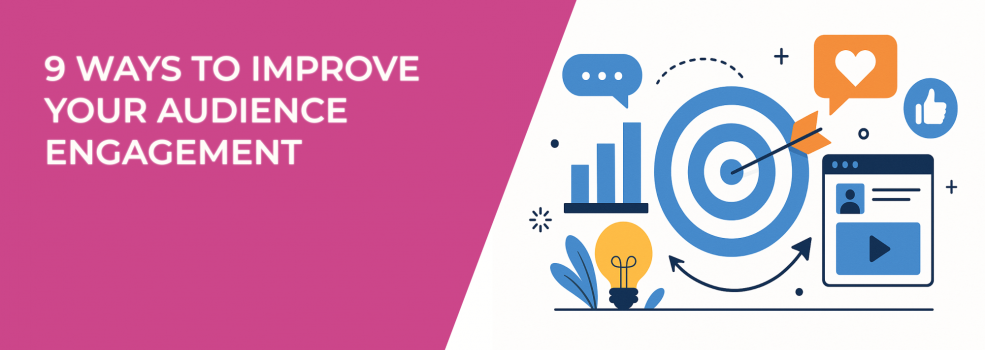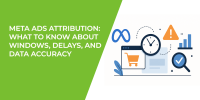Getting someone to notice your ad is one thing. Getting them to care — and keep caring — is something else entirely. Audience engagement isn’t just about likes, clicks, or open rates. It’s about sparking curiosity, creating connection, and making your brand feel like part of their daily feed, not an interruption.
Let’s skip the obvious “post at the right time” advice. Here are nine ways to improve your audience engagement that go beyond the basics.
1. Show Up Where They Don’t Expect You
Most advertisers stick to the same channels over and over — but audiences aren’t living exclusively on the main feed. They’re in smaller spaces that feel safer, quieter, and more personal.
Look for opportunities in:
-
Niche Facebook groups centered on hobbies, industries, or local communities.
-
Micro-newsletters in your industry that only a few thousand people read but open rates are sky-high.
-
Private Slack or Discord communities where your target audience spends downtime.
-
Event chat threads for webinars, summits, or conferences.
For example, if you sell fitness gear, don’t just advertise in “Fitness Enthusiasts” broadly — run ads that target members of a rock-climbing group or a meal-prep discussion forum. The conversation is already happening. You just join it in a way that feels like contribution, not interruption.
If you’re not sure how to find those high-engagement pockets, here’s a detailed guide on how to find and target Facebook Groups relevant to your business so your ads appear exactly where your audience is most active.
2. Let Your Audience Influence the Content Itself
Don’t just “ask for engagement.” Give people power over your content. This creates buy-in before your campaign even launches.
You can:
-
Run polls asking what topic your next Facebook Live should cover.
-
Let followers vote on the design of a new product feature.
-
Share two ad drafts and ask, “Which should we run?”
-
Host a naming contest for a new campaign or product.
If they choose the topic or design, they’ll watch for the outcome — and share it with others because they were part of the process. This turns passive viewers into active stakeholders.
Polls and interactive content are even more effective when you’re already targeting the right people — see Facebook Ad Targeting 101: How to Reach the Right Audience for ideas on refining your audience before you ask for input.
3. Use “Micro-Commitments” in Ads and Emails
Big CTAs can feel like too much too soon. Instead, ask for tiny, low-risk interactions first.
Ideas include:
-
A 1-question quiz in your Facebook carousel ad.
-
An emoji reaction poll in Instagram Stories.
-
A simple “Vote: Yes or No” button in your email.
Once they engage once, you’ve primed them for more. It’s psychological momentum — each click makes the next one easier. For example, a short quiz could lead to a personalized product recommendation, followed by a targeted ad with a discount code just for them.
If you want to go deeper into this tactic, using micro-conversions to optimize Facebook campaign performance can help you build engagement step-by-step without asking too much too soon.
4. Change the Visual Flow Every Few Seconds
Even great content loses people if it’s visually static. Change something every 3–5 seconds to keep the brain engaged.
In practice:
-
Video ads — switch angles, zoom in, add quick text overlays, or use cutaway shots.
-
Carousel ads — mix in graphics, lifestyle shots, and bold text cards.
-
Email campaigns — alternate between images, gifs, and short bursts of text.
Imagine editing your ad like a movie trailer. The pacing makes the viewer feel like they need to watch until the end. This method works especially well for short-form platforms like Reels or TikTok, but can also bring life to Facebook Ads.
5. Reverse the Expected Format
When every brand in your space uses polished, studio-quality ads, the most scroll-stopping thing you can do is look different.
Try:
-
A quick selfie video from a team member explaining something in a casual tone.
-
A screenshot of a customer review instead of a staged graphic.
-
A voice note converted to video with captions, so it feels raw and unscripted.
Authenticity often trumps perfection. One SaaS brand doubled engagement by running a casual, webcam-recorded explainer instead of a sleek animation. The “realness” stood out in the feed.
Many advertisers find that breaking away from polished visuals can improve scroll-stopping power — see Simple vs. Polished: Why Basic Facebook Ads Often Win for proof.
6. Create “Easter Eggs” for Repeat Viewers
Repeat viewers are your most valuable audience — give them a reason to keep coming back.
Some ideas:
-
Hide a small icon or character in each ad and hint that spotting it could win a reward.
-
Use a recurring “inside joke” in captions only long-term followers would get.
-
Reference past campaigns so loyal viewers feel “in the know.”
People love feeling part of an inside circle. When they spot the hidden detail, they’re more likely to comment, tag friends, or share just to show they caught it.
This works especially well when combined with user-generated content in your Facebook ads, which gives loyal followers even more reasons to engage repeatedly.
7. Borrow Engagement from Other Brands (the Smart Way)
Partnerships can put you in front of an already-engaged audience — without starting from scratch.
Ways to collaborate:
-
Cross-post content with a brand your audience already trusts.
-
Run a joint giveaway where following both accounts is required.
-
Comment strategically on their posts with value-added insights, not self-promo.
-
Guest appearances — you do a live on their page, they do one on yours.
The key is alignment: choose a brand whose audience overlaps with yours but isn’t a direct competitor. This expands reach while keeping engagement authentic.
8. Use Behavioral Retargeting Triggers
Retargeting works best when it’s tailored to actions, not just visits.
Example segments:
-
People who abandoned carts → show urgency-focused ads (“Only 3 left in stock”).
-
People who read blog posts → serve educational ads that go deeper into the topic.
-
People who watched your product video → follow up with testimonial or case study ads.
This feels relevant instead of repetitive. Instead of showing the same generic ad to everyone, you respond to the reason they engaged in the first place.
You can refine this even further by combining behavioral and interest-based retargeting to match your follow-up ads to what each person actually cares about.
9. Give Them a Role in Your Brand Story
People engage more when they feel like they’re part of your journey, not just an audience.
Ways to do it:
-
Feature customer photos or stories in your ads and email campaigns.
-
Host monthly challenges where participants share results and tag your brand.
-
Create a digital “Wall of Fame” for community contributions.
Even small acknowledgments — like reposting a customer’s Instagram Story — can make someone feel like a VIP. And VIPs talk about you more.
This is also a great way to fuel audience engagement campaigns that actually work in 2025, keeping your community active and invested in your brand.
Wrapping It Up
Engagement doesn’t always come from shouting louder or spending more. Sometimes it’s about subtle shifts — showing up in new spaces, making the audience feel like co-creators, and rewarding curiosity.
When you stop treating engagement like a one-way broadcast and start treating it like a real conversation, you’ll notice your audience not just watching, but leaning in.

